30 Eerie Amish Traditions We Can't Believe Exist
By Sophia Maddox | December 1, 2023
Amish Children Get a Kick Out of Team Sports
Welcome to the captivating world of the Amish community, where traditions and beliefs have endured for centuries, often leaving outsiders intrigued, perplexed, and at times, even creeped out. In this slideshow gallery, we will explore the rituals and beliefs that define the Amish way of life. From the intriguing practice of "bundling" to the seemingly peculiar fashion choices of growing beards while shaving mustaches, we will shed light on the reasons behind these customs.
We will also delve into the concept of rumspringa, a period of exploration and decision-making for Amish youth. Join us on this fascinating journey of discovery and gain a deeper understanding of the Amish culture. Continue reading to uncover the hidden layers of their traditions and beliefs that may challenge your perceptions and leave you with a newfound appreciation for their unique way of life.
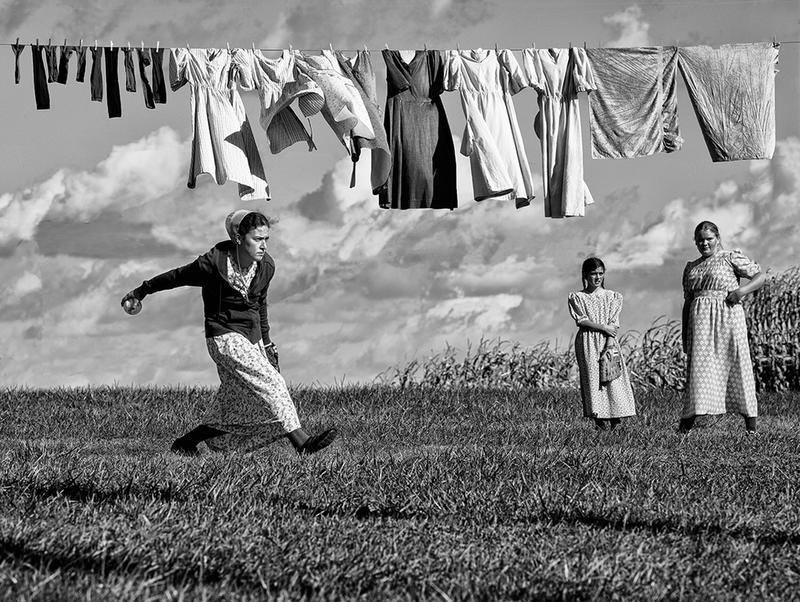
In an intriguing departure from their traditional way of life, the Amish community, including its younger members, have found a surprising affinity for sports such as volleyball and softball. Despite their reputation for leading a simple, agrarian lifestyle rooted in conservative values and limited interaction with modern technology, the Amish have embraced these recreational activities for several reasons.
Firstly, sports offer a break from the rigors of farm work, providing an opportunity for leisure and physical exercise. Moreover, these team-oriented games foster social interaction and community bonding, which are highly valued within the Amish culture. The enthusiasm displayed by Amish young people for sports can be perplexing to outsiders, who often associate the community with a more austere existence and might not anticipate their active engagement in athletic pursuits.
They Speak "Pennsylvania Dutch," Which Isn't Actually Dutch

The Amish community speaks a distinct dialect known as Pennsylvania Dutch, which is derived from German and influenced by English. This language is specific to the Amish and can sound strange or unusual to those outside the community. Pennsylvania Dutch serves as a marker of Amish cultural identity and reinforces their separation from mainstream society. The language reflects the Amish's commitment to preserving their traditions, heritage, and distinct way of life. To outsiders, the use of Pennsylvania Dutch may be perplexing due to its unfamiliar sounds, vocabulary, and grammatical structures.
The language acts as a barrier that contributes to the perception of the Amish community as insular and separate, making their conversations and interactions less accessible to those who do not understand the dialect. The preservation of this unique language further reinforces the Amish's distinct cultural identity, which can appear strange or unusual to those outside the community.
Rumspringa Is A Time For Young Amish Folks To Try Everything

The concept of Rumspringa is a unique practice within the Amish community, which can be seen as intriguing or strange to those outside of it. Rumspringa is a period of exploration and personal decision-making that occurs in the lives of Amish teenagers, typically beginning in their late teens and lasting until they choose to commit to the Amish way of life or leave the community altogether. During this time, young adults are granted a degree of freedom to experience the outside world, engage in activities that are typically forbidden within the Amish lifestyle, and interact with non-Amish individuals. While the purpose of Rumspringa is to allow individuals to make an informed decision about their commitment to the Amish faith, some outsiders may find it unusual or even contradictory that such a traditional community encourages temporary departure from their deeply held values and practices. The idea of young people testing boundaries and engaging in activities deemed "worldly" by the Amish could be seen as contradictory or puzzling to those who are unfamiliar with the intricacies of Amish culture and its emphasis on personal choice and religious conviction.
They Don't Use Birth Control
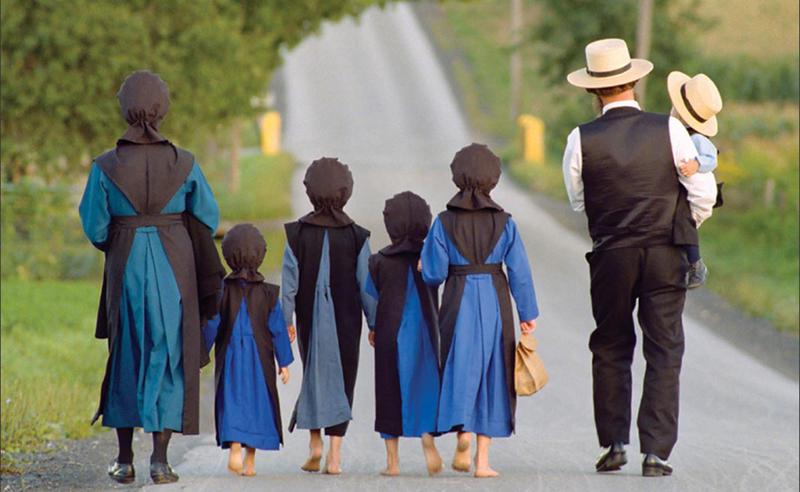
The Amish community's decision to abstain from using birth control arises from a complex web of religious beliefs, cultural values, and traditional practices that prioritize large families and the natural course of life. Rooted in their Anabaptist faith, the Amish view procreation as a sacred responsibility and a divine blessing. They believe that God's will should be followed without interference, and that every child conceived is a gift from God. Moreover, the Amish place great importance on the family unit, considering it to be the foundation of their community and a means of passing down their values and traditions to future generations.
The Church Is Not A Building, It's A Body
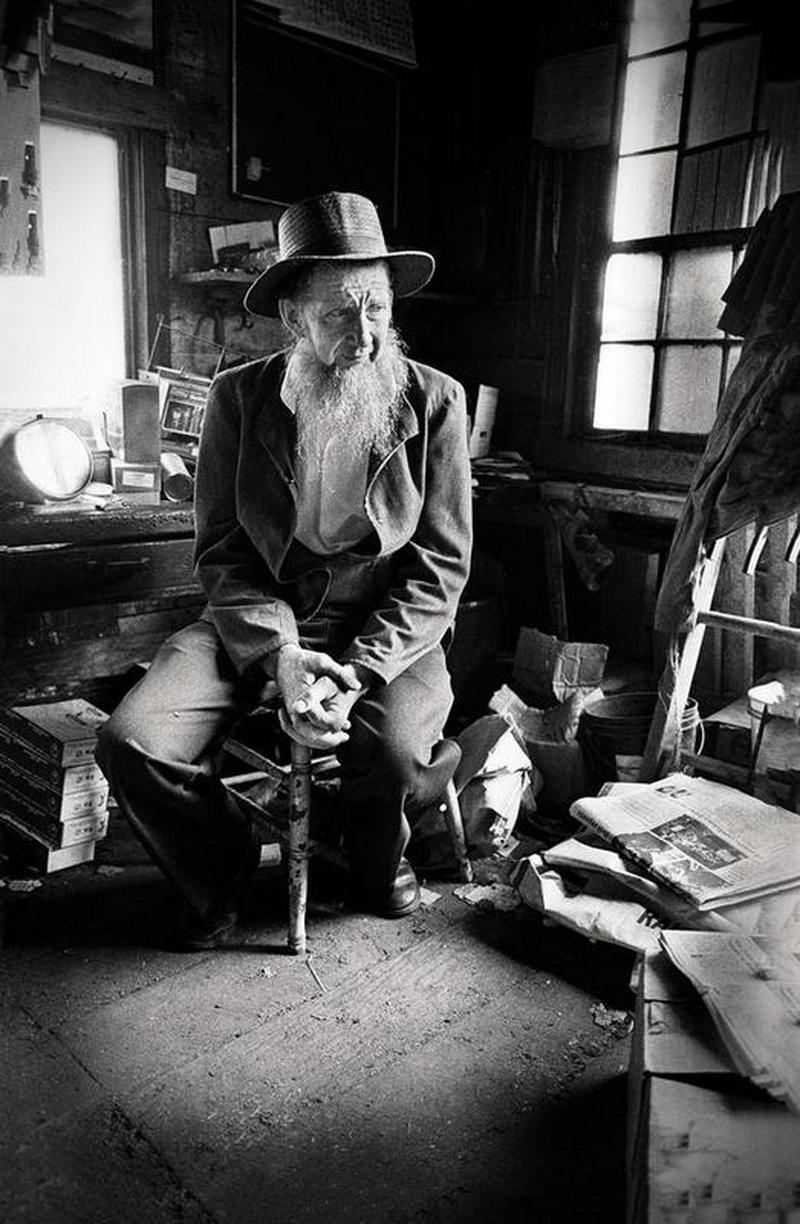
The Amish church diverges from typical Christian denominations as they do not hold services in dedicated church buildings. Instead, the Amish gather for worship either within their own homes, utilizing the most spacious room or basement, or in other structures on their property, such as workshops or barns. To accommodate the worshippers, benches are brought from one home to another using a specifically designed wagon.
The Amish firmly hold the belief that the church consists of its members rather than a physical structure. They also view constructing large church buildings as unnecessary extravagance. By conducting their worship services in homes, the Amish emphasize the importance of the community of believers as the true essence of the church. Additionally, this practice allows the Amish to avoid the substantial expenses associated with building and maintaining a separate house of worship.
Education Ends At Eighth Grade
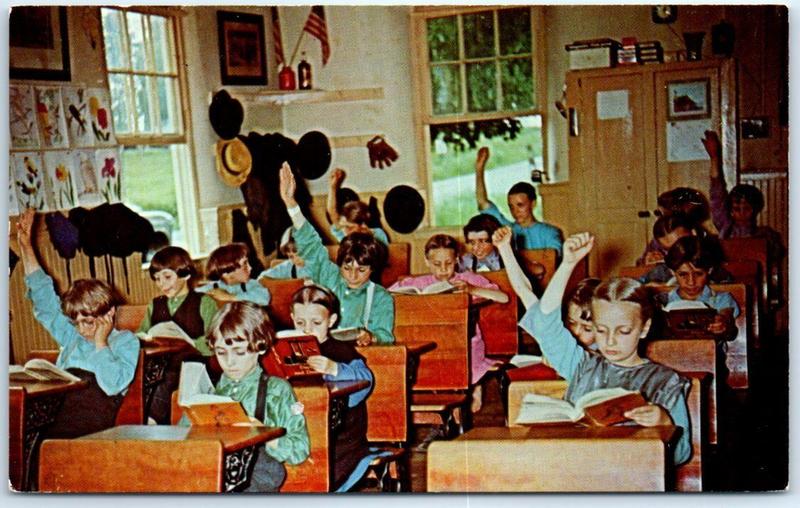
The Amish tradition of ending formal schooling at the eighth grade level can appear perplexing or concerning to individuals outside of their community. The decision to limit education beyond this point is rooted in the Amish desire to prioritize practical skills and values that align with their agricultural and craftsmanship way of life. They believe that a strong emphasis on formal education could lead to worldly influences and a potential erosion of their distinct cultural identity.
Instead, the Amish focus on teaching their children essential life skills, such as farming, homemaking, and craftsmanship, which they view as vital for sustaining their self-sufficient and close-knit community. This limited educational approach can be seen as incompatible with the broader societal emphasis on higher education and career prospects. Concerns may arise about the potential impact on the individual's future opportunities and ability to navigate an increasingly complex world outside the Amish community.
They Follow The Ordnung, A Religious Guiding Framework That's Never Been Written Down
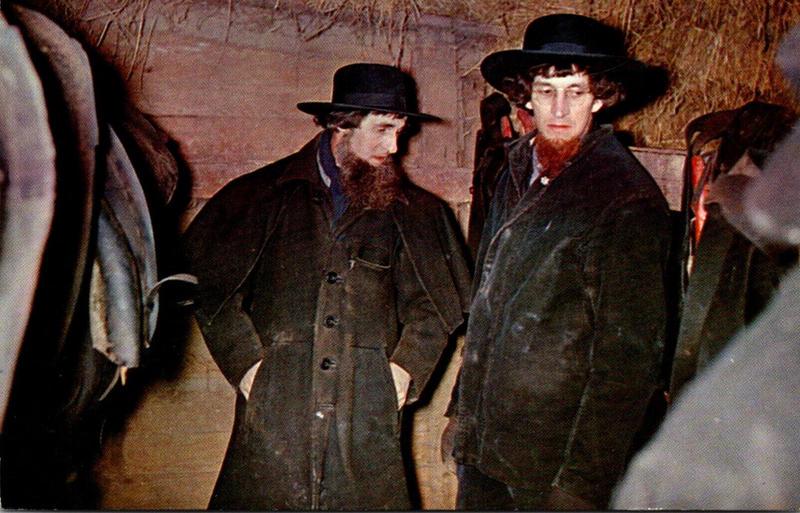
The Ordnung is a fundamental guiding framework for the Amish way of life, which outlines their customs, rules, and expectations. While it plays a significant role in shaping their community, some might find aspects of it to be unsettling or creepy. The strict adherence to the Ordnung can create a sense of conformity and control within the community, as individuality and personal choices are often sacrificed for the sake of maintaining tradition.
The rules cover pretty much ever aspect of life, including clothing, technology, social interactions, and religious practices. The emphasis on simplicity, separation from the modern world, and limited exposure to outside influences can be perceived as isolating or restrictive. Additionally, the Ordnung often enforces strict gender roles and hierarchical structures within the community, which can be seen as oppressive and outdated by observers.
Their Children Play With Faceless Dolls

Amish children often play with faceless rag dolls, which can evoke a sense of unease or creepiness for those unfamiliar with the Amish community. These dolls deliberately lack facial features to symbolize the belief that all individuals are equal in the eyes of God, emphasizing the importance of humility and discouraging vanity. While this practice holds deep meaning within the Amish culture, outsiders might find the absence of facial expressions disconcerting or unsettling to say the least.
They Have No Private Access To Electricity Or Technology

The Amish community's deliberate rejection of modern technology sets them apart from mainstream society and can be seen as a puzzling or intriguing aspect of their way of life. The Amish choose to abstain from many forms of technology as they believe it can lead to negative influences, erode their values, and disrupt the strong sense of community. By limiting their use of technology, they aim to preserve simplicity, self-sufficiency, and a deep connection to nature. The absence of modern conveniences such as electricity, cars, televisions, and computers reflects a commitment to living a traditional and agrarian lifestyle that prioritizes manual labor, communal interaction, and a strong focus on family and faith. While outsiders may find it challenging to comprehend the Amish's deliberate disconnection from technological advancements, it is a deliberate choice that aligns with their core values and helps them maintain their distinct identity as a close-knit, spiritually grounded community.
"Bundling" Remains A Courting Ritual

The Amish tradition of "bundling," where a couple is wrapped together in a bed, occasionally with a board separating them, during the courting phase, can be viewed as peculiar by individuals outside the Amish community. Bundling has historical roots in Amish culture and is intended to allow young couples to spend time together and foster emotional connection while upholding strict moral standards and promoting abstinence.
However, this practice clashes with contemporary societal norms and expectations surrounding dating and intimacy. The idea of allowing unmarried individuals to share a bed, even with a board in place, challenges prevailing norms regarding personal boundaries and sexual propriety. The apparent blending of physical proximity and the emphasis on modesty within bundling can create discomfort or confusion among those unfamiliar with the intricacies of Amish customs, leading to perceptions of the practice as strange or unconventional.
They Believe Photography Produces "Graven Images"

The Amish deeply value humility and consider pride to be detrimental to their community's well-being. As a result, they have a prohibition against personal photographs in their homes. This is because photographs can highlight individuality and draw attention to oneself, which goes against their emphasis on living a modest and humble life. Additionally, the Amish believe that photographs that allow for recognition of individuals go against the biblical commandment that forbids the creation of graven images. They prefer to be remembered by the way they lived their lives and the examples they set, rather than by their physical appearances.
Musical Instruments Are A Rarity

Amish church music is typically sung without any musical accompaniment, and it is not common for them to play instruments. They consider stringed instruments like guitars and banjos to be forms of self-expression that draw undue attention to the individual, so they generally avoid them. However, in certain communities, small harmonicas or mouthharps may be allowed. Additionally, the Amish do not participate in dancing to music or songs. While a few Amish individuals may write their own songs, it is not a widespread practice.
Their Hymnal Has No Musical Notes

The Ausbund is a hymnal that holds significant historical and cultural importance within the Amish community. It is a centuries-old collection of religious songs that have been passed down through generations. What sets the Ausbund apart is that it lacks musical notes or any form of written musical notation. Instead, the hymns are sung and learned through an oral tradition, where melodies are taught and preserved by memory. This unique aspect of the Ausbund reflects the Amish commitment to simplicity and their emphasis on community and worship. By not relying on written musical scores, the Amish ensure that their worship remains focused on the spiritual message of the hymns rather than being dependent on formal musical training or performance.
Women Are Expected To Be Subservient

In the Amish community, there are traditional gender roles that emphasize women's expected subservience, and this practice can be perceived as unsettling or objectionable by those outside the community. Amish women are typically expected to prioritize their roles as wives, mothers, and homemakers, while men are often regarded as the primary decision-makers and providers. Women often have limited educational opportunities beyond the eighth grade and have fewer leadership roles within the community. The Amish place a strong emphasis on maintaining traditional values and preserving their way of life, which can result in the perpetuation of patriarchal norms. Torah Bontrager, a former member of the Amish community told Lancaster Online:
We women don’t have any rights. We don’t have any women in leadership positions. We’ve been around for over 300 years and there’s not a single woman in a leadership position... There’s so much [abuse] in the Amish system, and a lot of people don’t understand. They don’t even have the vocabulary to express what’s going on. And they don’t have the vocabulary to express or even how to report it. There’s so many things. It’s sad. I could sit here and tell story after story after story.
Barn-Raising Remains An Important Communal Custom

Barn raising is a time-honored tradition in the Amish community that exemplifies their strong sense of cooperation and communal spirit. When a member of the Amish community needs to build or repair a barn, the entire community comes together to assist in the construction process. This collective effort involves not only the physical labor but also the coordination of resources and planning. The Amish view barn raising as a vital expression of their shared values and interdependence, emphasizing the importance of mutual support and unity. This practice fosters a sense of camaraderie and strengthens the bonds within the community. It also showcases the Amish commitment to simplicity, self-sufficiency, and the preservation of their agricultural way of life. Barn raising is a remarkable display of teamwork and solidarity, creating a sense of pride and accomplishment for everyone involved.
Puppy Mills Are A Common Amish Business Venture

The Amish community, accounting for a relatively small portion of the American population with an estimated 300,000 individuals, has faced scrutiny from animal welfare organizations regarding their involvement in dog breeding. Reports indicate that numerous Amish-run operations maintain substandard conditions for their dogs. One notable incident occurred in May 2017 when the Pennsylvania Society for the Prevention of Cruelty to Animals (SPCA) took action by rescuing 27 dogs from an illegal breeder in Lancaster County. Among the rescued dogs were a yellow Labrador retriever and a bulldog, both requiring urgent veterinary care. After rehabilitation, all the dogs found permanent homes, while the SPCA pursued legal charges against the breeder involved.
Drawing attention to the issue, the Humane Society highlights the troubling consequences of unlicensed breeders, who subject dogs to neglect, untreated health problems, and incessant breeding. Their annual list of 100 "horrible" breeders showcases distressing incidents, ranging from dogs shivering and wounded to instances where breeders continue operations despite having previously shot a dog in the head, an incident documented as far back as 2008. The Humane Society reveals that these breeders persist despite multiple warnings and citations issued by law enforcement agencies.
Beards Reveal The Wearer's Relationship Status

In the Amish community, beards hold significance in relation to a man's relationship status. Amish men are typically clean-shaven until they are married, at which point they let their beards grow as a symbol of their commitment to marriage and family. The length and style of the beard may vary among different Amish affiliations or districts.
This practice can appear peculiar to those outside the Amish community because it diverges from mainstream societal norms. In contemporary culture, facial hair is often seen as a personal grooming choice or a fashion statement, rather than a marker of marital status. The emphasis on beards as a visual representation of relationship status in the Amish community highlights their distinct customs and traditions, which can seem unusual or unconventional to those unfamiliar with their way of life.
They Marry Within Their Community

The Amish practice of marrying exclusively within their community can be puzzling to those who are not part of their cultural and religious traditions. The Amish prioritize maintaining their distinct way of life and preserving their values and beliefs. By marrying within their community, they ensure that their children will be raised in an environment that aligns with their traditions, language, and customs. This practice also helps to reinforce the strong sense of community and promotes social cohesion among the Amish.
However, to outsiders, the idea of limiting marital choices exclusively to a small and tightly-knit group may seem unusual or even restrictive. It challenges the broader societal norms of seeking love and companionship outside of specific cultural or religious boundaries.
They Don't Use Buttons

The Amish community's preference for using hooks instead of buttons or zippers on their clothing is driven by their commitment to simplicity and modesty. They believe that buttons and zippers can be associated with vanity and unnecessary adornment. By using hooks, the Amish avoid drawing attention to their clothing and maintain a humble appearance. This choice also aligns with their traditional lifestyle and craftsmanship, as hooks can be handmade and easily repaired if needed.
However, to those who are not part of the Amish community, this practice may seem strange or unusual. In a world where buttons and zippers are common fastening methods, the absence of such convenience can be perceived as outdated or cumbersome. The Amish's deliberate rejection of modern conveniences, including fastening mechanisms, challenges the norms of contemporary fashion and can appear as an eccentric or unconventional choice to those outside the community.
Amish Limit The Use Of Modern Medicine

The Amish community employs a diverse range of healthcare and wellness approaches that encompass both conventional and unconventional methods. The specific practices utilized can vary among different Amish groups, communities, and families. In general, natural remedies derived from plants, vegetables, herbs, and similar sources form a significant part of the Amish healthcare repertoire for addressing common ailments. It is worth noting that the use of natural remedies is not exclusive to the Amish but is also prevalent in non-Amish society. These remedies often have a long history of use and have been passed down through generations, reflecting a broader cultural and historical reliance on natural healing methods.
Mustaches Are Not Allowed

The Amish tradition of forbidding mustaches has its roots in their early history. Elaborate mustaches were commonly worn, especially by military personnel during that time. However, the Amish and other Mennonite communities faced persecution from these groups. Additionally, as a pacifist community, the Amish wanted to distance themselves from any connection to military culture and the act of war. As a result, they strictly prohibited their members from growing mustaches. Although mustaches have become less popular among men in Western society today, this tradition remains an important aspect of the Old Order Amish community, which consists of around 200,000 individuals in North America.
They Believe In A Literal Interpretation Of The Bible

The Amish community's adherence to a literal interpretation of the Bible can be disconcerting to individuals outside their community due to its stark contrast with more liberal and progressive approaches to scripture. The Amish believe in the infallibility and divine inspiration of the Bible, considering it to be the ultimate authority on all aspects of life. This unwavering commitment to biblical literalism can create tension with modern understandings of science, historical context, and societal changes.
The rejection of certain scientific theories, acceptance of traditional gender roles, and strict moral codes based on biblical teachings may clash with prevailing cultural norms and progressive values. This stark divergence can be unsettling to those who prioritize critical thinking, intellectual exploration, and religious interpretations that allow for flexibility and contextual understanding. The Amish's strict adherence to a literal interpretation of the Bible may appear rigid and unwavering, challenging the broader societal trend towards inclusivity, diversity, and evolving understandings of religious texts.
Hochmut, Or The Suppression Of Pride

The concept of Hochmut, meaning pride or arrogance, holds significant importance in the Amish community and can be off-putting to those outside their community. The Amish emphasize humility, modesty, and the rejection of self-importance. They view pride as a threat to community harmony and spiritual well-being. The Amish prioritize living a simple and humble life, valuing collective unity over individual accomplishments. This emphasis on suppressing personal ambition and downplaying individual achievements can seem foreign or counterintuitive to a society that often encourages self-promotion and individualism.
The Amish's intentional avoidance of pride can be perceived as unconventional or even unsettling, as it challenges the norms of a society that often values self-confidence and self-expression. The rejection of personal ambition and self-importance in favor of community and humility sets the Amish apart and can be difficult for outsiders to fully comprehend or embrace.
They Don't Follow EPA Guidelines

The Amish community does not adhere to the guidelines set forth by the Environmental Protection Agency (EPA) when it comes to farming practices. The Amish prioritize their traditional agricultural methods, which often differ from modern conventional farming techniques. They rely on manual labor, horse-drawn equipment, and other traditional tools rather than utilizing advanced machinery or chemical inputs. This traditional approach to farming, while emphasizing self-sufficiency and sustainability, may not align with the EPA's guidelines for environmental protection. The Amish prioritize their long-standing practices and beliefs over regulatory standards, which can be seen as unusual or non-compliant by those who place greater emphasis on modern environmental regulations and sustainability measures. However, it is important to note that the Amish's farming practices are deeply rooted in their cultural traditions and are shaped by their desire to maintain a simple and self-sustaining way of life.
Women Aren't Allowed To Cut Their Hair

The Amish community holds a belief that women should not cut or style their hair, and this practice can be perceived as puzzling or unsettling to those outside their community. The Amish prioritize modesty, simplicity, and conformity to their cultural norms. They view long, uncut hair as a symbol of femininity and a sign of submission to God and their husbands. The decision to maintain uncut hair reflects their commitment to traditional gender roles and their desire to distinguish themselves from the broader society.
This practice contrasts with prevailing societal norms that emphasize individual expression and personal style. The Amish's strict adherence to this practice may appear restrictive or outdated to those who value freedom of expression and choice in matters of personal appearance. The dissonance between the Amish's hair-related customs and mainstream cultural expectations contributes to the perception of this tradition as off-putting or unusual to those outside the Amish community.
No Sexual Education

The Amish community typically lacks formal sexual education as it is not a part of their traditional curriculum. Instead, the Amish prioritize teachings centered around their religious beliefs, cultural values, and practical life skills. Discussions about sex and reproductive health are often approached within the context of marriage and family life, and primarily take place within the home and community. This approach can be viewed as unusual or insufficient by those outside the Amish community, as comprehensive sexual education is considered important for understanding reproductive health, consent, and safe practices. Torah Bontrager, a former member of the Amish community told Lancaster Online:
Who knows how many children have a dysfunctional relationship with their bodies and sexuality because of a lack of sex ed and that kind of experience... Nobody spoke to me, nobody told me how it worked, nothing. Nobody told my husband how it worked; there was nothing.
Shunning

Shunning is a practice within the Amish community where individuals who have violated community rules or norms can be socially excluded and cut off from contact with their family and the community at large. This concept can be upsetting and strange to those outside the Amish community due to its severe consequences and its contrast with the broader values of forgiveness and reconciliation. Shunning is seen as a form of discipline aimed at maintaining the integrity and purity of the community. It serves as a deterrent against behavior deemed harmful to the community's collective well-being.
However, from an outsider's perspective, the act of cutting off family members or isolating individuals who have made mistakes can be seen as harsh and unforgiving. The lasting effects of shunning can be emotionally and psychologically distressing for those subjected to it, as it disrupts social connections and challenges the societal emphasis on forgiveness, empathy, and second chances.
They Don't Consider Themselves "English"

The Amish community refers to non-Amish Americans as "English," and this practice stems from historical language and ethnic distinctions during colonial times. In the New World, compact settlements of Germans, including the Amish and Mennonites, were set apart from English, French, and Spanish colonies.
As the English spoke of these distinct German groups, they commonly referred to them as "Germans." Presently, when an Amish individual uses the term "Englischer" to describe someone, it does not signify disloyalty to America but rather denotes their non-Amish status. This cultural distinction is definitely something that newcomers to the Amish people are going to find strange, especially if they don't have any overt connections to England.
The Amish Don't Pay Social Security

The Amish community does not participate in paying or collecting Social Security as they were granted an exemption by Congress in 1965. The Amish perceive Social Security as a form of commercial insurance, which conflicts with their beliefs. Instead, they prioritize the responsibility of the church members to provide for each other's physical and material needs. Additionally, in certain states, the Amish have been granted exemptions from workers' compensation for the same reason. Furthermore, due to their belief in non-resistance, which they prefer over the term pacifism, the Amish are exempt from military service. This exemption extends beyond wartime to encompass law enforcement, politics, and legal actions. These exemptions reflect the Amish's commitment to their religious principles and their desire to maintain a distinct way of life that differs from societal norms and obligations.
Amish Communities Rarely Have Children Outside Of Their Community

A 2005 investigation by 60 Minutes shed light on a significant issue prevalent in Amish communities: genetic diseases. These diseases were not only rare but also so uncommon that they lacked official names. Some Amish communities accounted for nearly one-third of global cases of these diseases. The root cause was attributed to a phenomenon called the "founder effect." The majority of Amish individuals can trace their ancestry back to a small group of German-Swiss immigrants who settled in the United States during the 1700s.
Due to their limited initial population size, prolonged intermarriage within the community has resulted in an increased prevalence of genetic disorders. The severity of the problem has led certain Amish communities to establish specialized clinics to provide care for their children with special needs. A more recent study conducted by the University of Exeter in 2020, as reported by Health Europa, identified a staggering 150 genetic disorders within Amish communities.
The study estimated that up to 80 percent of all Amish individuals are affected by a genetic disorder. Furthermore, the study unveiled 25 disorders that are unique to the Amish community and have not been found elsewhere in the world.

